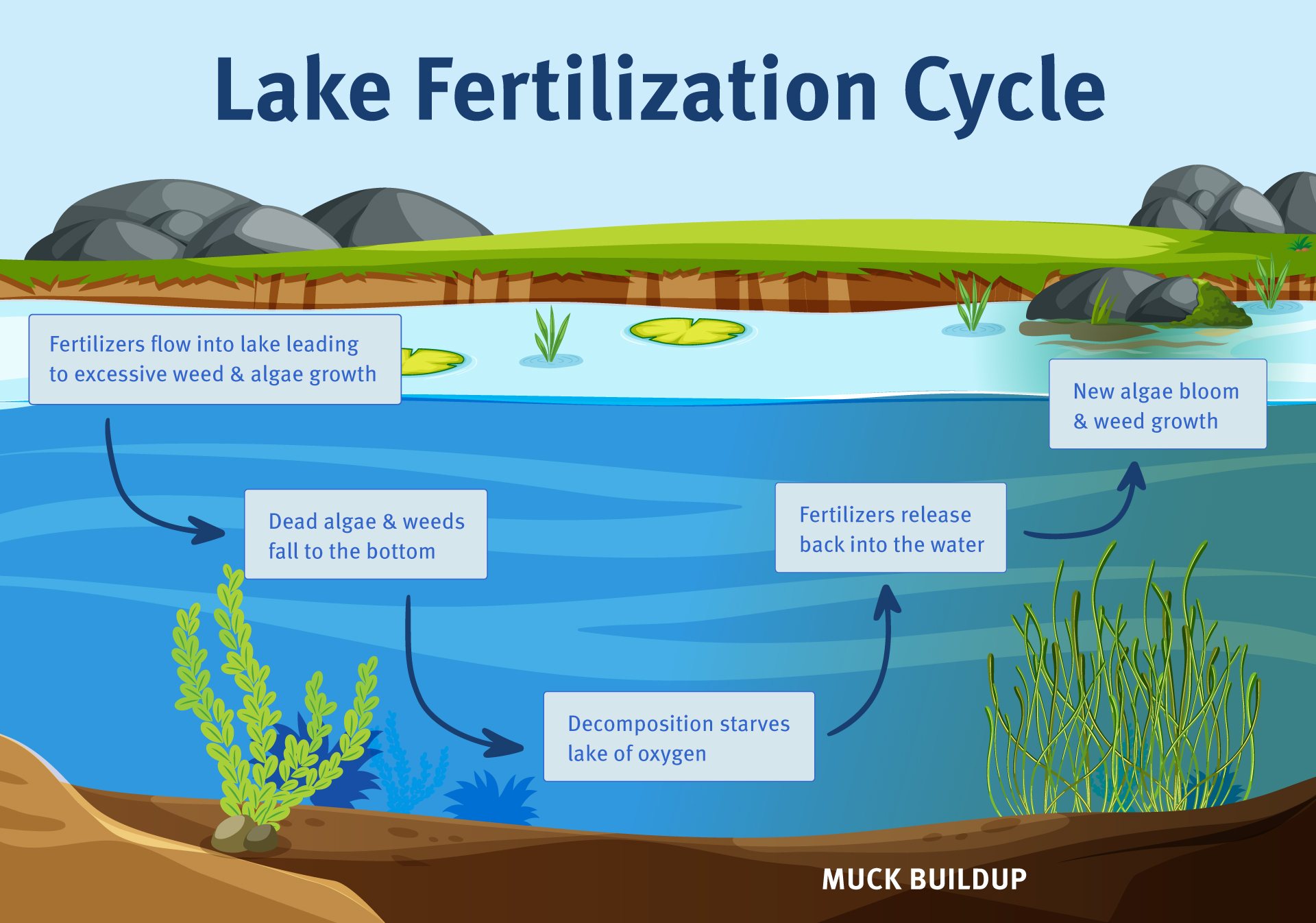The fertilizers we use to grow green crops and lawns are the same fertilizers that grow weeds and algae on our lakes. When phosphates, nitrates, and other pollutants enter the lake from the watershed and ‘fertilize’ the lake, weeds grow and algae blooms. This is called “nutrient overloading” and it causes the lake to become eutrophic.
Eutrophic: (of a lake or other body of water) rich in nutrients and so supporting a dense plant population, the decomposition of which kills animal life by depriving it of oxygen.

As weeds and algae die they sink to the bottom of the lake and begin to decay. Their decomposition depletes oxygen, killing the beneficial (aerobic) bacteria and other microorganisms that would otherwise decompose the phosphorus and nitrogen in muck. As aerobic bacteria and ‘muck-eating’ microorganisms die, anaerobic bacteria take over and the bottom of the lake becomes layered in dead organic muck. The nutrients in the muck are released back into the lake and phosphorus and nitrogen continuously fuel further weed and harmful algae growth. Once begun, nutrient overloading is a vicious cycle that kills lake ecosystems by diminishing water quality, making boating and swimming complicated or impossible, and decreasing property values. At its worst, a eutrophic lake will experience massive fish die off (a fish kill) and/or toxic blue-green algae that threatens human health.
If you are concerned about nutrient overloading in your lake, contact us today. We can send you a free water quality testing kit and talk you through the results so you understand your lake’s health.

